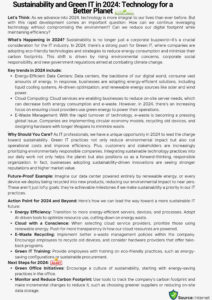
Introduction:
In the vast expanse of internet history, few inventions have had as profound an impact on society as the computer. From its humble beginnings as a room-sized machine to the sleek, portable devices we carry in our pockets today, computing has undergone a remarkable evolution. As we mark World Computer Day on February 15th, 2024, let’s embark on a journey through time to explore ten decades of digital innovation and the milestones that have shaped our modern world.
- The Birth of the ENIAC: 1940s:
The story of computing begins in the 1940s with the birth of the Electronic Numerical Integrator and Computer (ENIAC), the world’s first general-purpose electronic digital computer. Developed during World War II to calculate artillery firing tables, the ENIAC was a marvel of its time, occupying an entire room and weighing over 30 tons. Its launch on February 15th, 1946, marked the dawn of the digital age and set the stage for decades of innovation to come. - The Rise of Commercial Computing 1950s:
In the 1950s, computing transitioned from military and scientific use to commercial applications. Companies like IBM began producing mainframe computers, which revolutionized business operations by automating tasks such as accounting and data processing. These early commercial computers laid the groundwork for the digital revolution that would follow in the decades to come. - The Birth of Silicon Valley 1960s:
The 1960s saw the emergence of Silicon Valley as a hub for technological innovation. Companies like Fairchild Semiconductor and Intel pioneered the development of silicon-based integrated circuits, laying the foundation for the modern computer industry. This decade also saw the invention of the microprocessor, a key milestone that would fuel the proliferation of personal computers in the years ahead. - The Personal Computer Revolution 1970s:
The 1970s witnessed the birth of the personal computer revolution, driven by innovations such as the Altair 8800 and the Apple I. These early PCs, though primitive by today’s standards, empowered individuals to harness the power of computing in their homes and offices. The launch of the Apple II in 1977 further cemented the role of personal computers in everyday life, foreshadowing the digital revolution to come. - The Rise of Microsoft and Apple 1980s:
The 1980s saw the rise of two tech giants that would come to dominate the computing landscape: Microsoft and Apple. Microsoft’s MS-DOS operating system became the de facto standard for IBM-compatible PCs, while Apple’s Macintosh introduced the world to the graphical user interface. These developments laid the groundwork for the modern computing experience, with user-friendly interfaces and software applications becoming increasingly accessible to the masses. - The Internet Age 1990s:
The 1990s ushered in the internet age, transforming computing from a tool for individual productivity to a global network of interconnected systems. The World Wide Web, invented by Sir Tim Berners-Lee in 1989, revolutionized communication, commerce, and information access. The launch of web browsers like Netscape Navigator and Internet Explorer made the internet accessible to millions of people worldwide, paving the way for the digital economy of the 21st century. - The Dot-Com Boom Early 2000s:
The early 2000s saw the culmination of the internet’s transformative power in the form of the dot-com boom. Companies like Amazon, Google, and eBay emerged as industry leaders, leveraging the internet to revolutionize e-commerce, search, and online services. While the dot-com bubble ultimately burst in 2000, it laid the groundwork for the digital economy that continues to thrive today. - The Mobile Revolution Late 2000s:
The late 2000s witnessed the rise of the mobile revolution, as smartphones and tablets began to replace traditional PCs as the primary computing devices for many people. The launch of the iPhone in 2007 and the subsequent explosion of mobile app development transformed how we communicate, work, and access information. The app economy, fueled by platforms like the Apple App Store and Google Play Store, created new opportunities for developers and entrepreneurs alike. - The Era of Big Data and Cloud Computing 2010s:
The 2010s saw the emergence of big data and cloud computing as dominant trends in computing technology. Companies like Amazon Web Services, Microsoft Azure, and Google Cloud Platform pioneered the development of cloud infrastructure, enabling organizations to store, process, and analyze massive amounts of data at scale. This era also saw the rise of artificial intelligence and machine learning, with breakthroughs in areas such as natural language processing, computer vision, and autonomous systems. - The Future of Computing 2020s and Beyond:
As we look to the future, the possibilities of computing are limitless. Emerging technologies such as quantum computing, blockchain, and augmented reality promise to revolutionize industries ranging from finance and healthcare to entertainment and transportation. With each passing year, computing continues to evolve at an exponential pace, driving innovation and shaping the world we live in.
Conclusion:
On World Computer Day, we celebrate not only the achievements of the past but also the endless potential of the future. From the birth of the ENIAC to the rise of quantum computing, computing has undergone a remarkable evolution over the past century, transforming every aspect of our lives in the process. As we reflect on the milestones of the past and look to the challenges and opportunities of the future, let us embrace the power of computing to drive positive change and create a better world for generations to come.






